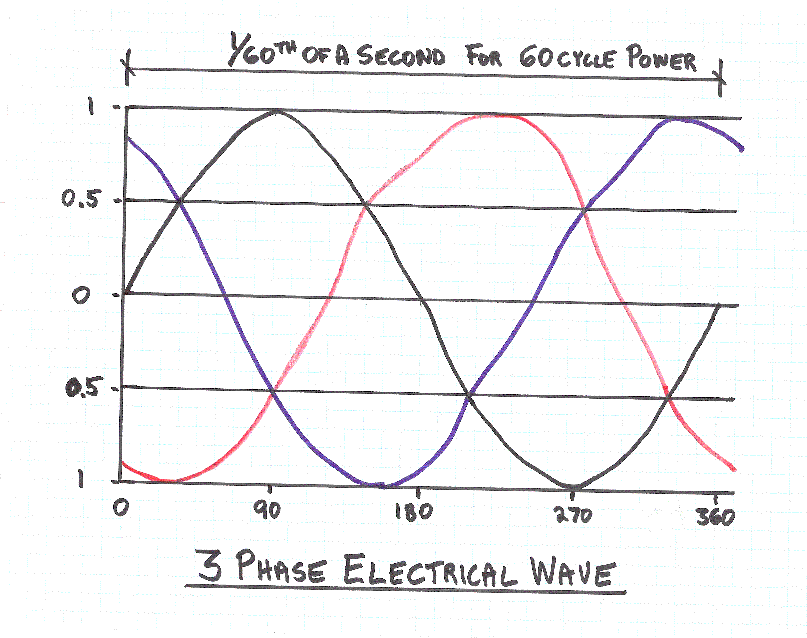How is Single Phase AC Different from Three Phase AC?
How is Single Phase AC Different from Three Phase AC?
To begin with the simple, practical information, single phase AC power requires 3 wires: a hot, a neutral and a ground. Three phase requires 5 wires: 3 hots, a neutral and a ground. In three phase, each of the hot wires can complete a circuit with the neutral. Three phase power can carry more electrical capacity than single phase. Starting a 10 hp motor (starting a motor can require 6 times more power than running a motor) may cause a single phase line to blink or have a low voltage. A three phase line could allow that 10 hp motor to start without problem. Generally, three phase motors are more compact and efficient than similarly sized single phased motors, so the use of three phase motors is widespread. Large motors get used in so many applications: elevators, fans, blowers, compressors, pumps, conveyor drives, etc., so many projects require three phase electrical power.
To understand three phase power, think about the 60 cycles of alternating current electricity, discussed above. Each 1/60th of a second has a directional shift in the current. The current flows in one direction, then back in the other direction. The 3 Phase Electrical Wave figure below illustrates the black line (phase #1) flowing in one direction at 0, then flowing in the other direction at 180 and finally flowing back in the original direction at 360. The red line (phase #2) and the blue line (phase #3) start off the directional shifts at different times. This phase separation must be considered to get the correct phase rotation when wiring induction motors. In other words, one hook-up makes the motor run forward, the other hook-up makes it run backwards.

So the three phase electrical system has 3 conductors carrying voltage waveforms (shown above) that are offset in time by 120 degrees or 1/3 of a cycle.
When designing three phase electrical systems, one strives to balance the load between phases. In a 5 wire, 120/208 volt system, two of the hots create a 208 volt circuit while a hot and a neutral create a 120 volt circuit. One tries to balance the load (current), voltage and impedance on each of the phases. Of course a perfect balancing never happens. But too much of an imbalance causes higher operating temperature, shorter motor life and less efficiency
Comments
Post a Comment